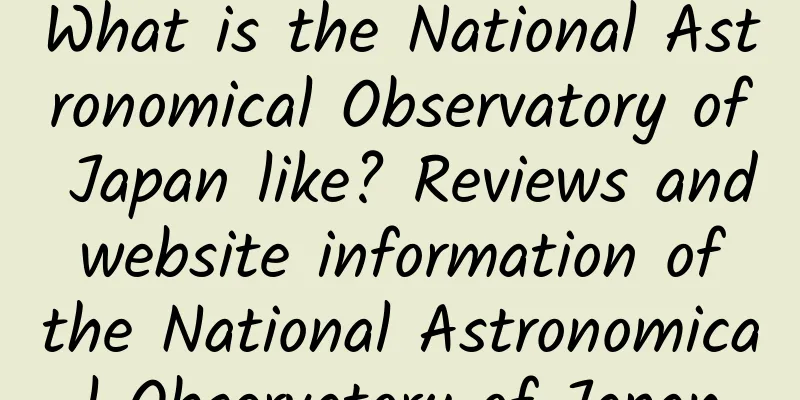New Scientist Magazine_New Scientist Review and Website Information

|
New Scientist Magazine_What is New Scientist? New Scientist is an international scientific magazine founded in 1956 and published weekly. It established an online version in 1996. Website: www.newscientist.com New Scientist magazine: exploring the frontiers of scienceIn today's rapidly developing technological era, it is particularly important to understand the latest scientific research results and trends. For those who are eager to keep up with the pace of science, New Scientist is undoubtedly an indispensable source of information. As an internationally renowned scientific magazine, New Scientist has been committed to providing authoritative, easy-to-understand and forward-looking scientific reports to readers around the world since its founding in 1956. This article will introduce in detail the historical background, content characteristics, audience positioning and development history of New Scientist's online version to help readers have a more comprehensive understanding of this benchmark media in the field of scientific communication. History: From paper publications to digital platformsNew Scientist was founded in 1956, during the Cold War, when global attention to science and technology reached an unprecedented level. At that time, a group of British scientists and journalists saw the public's strong demand for scientific knowledge, so they founded this weekly magazine that introduces scientific progress in popular language. The original intention of the magazine was to transform complex scientific theories and experimental results into content that ordinary readers could understand in a simple way, thereby narrowing the distance between science and the public. Over time, New Scientist has gradually developed into a global scientific journal with a wide readership. It not only focuses on basic scientific research, but also covers topics in many fields such as technology applications, environmental issues, and medical breakthroughs. In 1996, in order to adapt to the advent of the Internet era, New Scientist launched its own official website, www.newscientist.com, further expanding its influence. Today, whether in print or online, New Scientist has become one of the most trusted sources of scientific information in the world. Content Features: Diverse scientific perspectivesNew Scientist is known for its rich content and unique perspective. The magazine covers a wide range of disciplines from astronomy to biology, from artificial intelligence to climate change. Here are some of the main content sections:
In addition to these regular columns, New Scientist also regularly launches special features that focus on a specific theme or event, such as "Future Energy", "Artificial Intelligence Ethics" or "New Coronavirus Pandemic". This in-depth reporting format allows readers to have a more comprehensive understanding of the overall picture of a certain field. Audience positioning: For all those who love scienceAlthough New Scientist is undoubtedly professional and authoritative, it is not a magazine for scientists only. Instead, its target audience is very broad, including but not limited to the following groups of people:
It is precisely because of this inclusive audience positioning that New Scientist has successfully built a bridge connecting the scientific community and the public. The development of the online version: a successful example of digital transformationWith the rapid development of information technology, traditional media are facing huge challenges. Many old newspapers and periodicals are seeking transformation. New Scientist is no exception. As early as 1996, it established its own official website www.newscientist.com, becoming one of the earliest scientific journals to enter the Internet field. The launch of the online version has greatly broadened the reach of New Scientist. Compared with the paper version, the online version has the following significant advantages:
In addition, New Scientist also actively uses social media platforms for promotion, attracting a large number of younger readers. Through channels such as Facebook, Twitter, and Instagram, they are able to reach their target audience more quickly and establish close connections with them. Influence and evaluation: a leader in science communicationAfter more than 60 years of development, New Scientist has become one of the most influential scientific journals in the world. It has not only won the love of countless loyal readers, but also gained high recognition from the industry. The following are some key data and comments:
Of course, New Scientist is not perfect. Some critics point out that in order to make it easy to understand, some complex topics may be oversimplified; at the same time, the commercial operation model may also affect the independence of the content. However, overall, New Scientist is still regarded as a benchmark in the field of science communication. Future Outlook: Continue to Lead the Scientific TrendIn the face of an ever-changing world, New Scientist always maintains a keen insight and an open attitude. In the future, we can expect further developments in the following areas:
In short, New Scientist will continue to play the role of a link between science and the public, leading us to explore the infinite possibilities of the unknown world together. ConclusionFrom the first issue in 1956 to today's comprehensive science platform covering the world, New Scientist has witnessed the glorious course of scientific development over the past half century. Whether you are a novice in the field of science or a professional who has been deeply involved in a certain field, you can find your own value in this magazine. Let's follow the footsteps of New Scientist and swim in the ocean of science! |
Recommend
What is the difference between black buckwheat tea and black buckwheat rice?
Black buckwheat tea and black buckwheat corn are ...
How to make kiwi and wolfberry porridge
The preparation of kiwi and wolfberry porridge is...
How to make fried beef with celery
I don’t know how much you know about the recipe o...
What are the uses of orange peel? What are the uses of orange peel?
I'm sure everyone has eaten oranges. They are...
The difference between sour plum crystal and sour plum powder. The benefits of drinking sour plum crystal
Sour plum crystal and sour plum powder are both v...
How to use vegetables for beauty treatments Specific uses of vegetables for beauty treatments
Have you heard of vegetable beauty? As early as i...
Cultivation method of anthurium and precautions for cultivating anthurium
Anthurium is a plant of the Araceae family. It is...
How to pickle radish strips How to pickle radish shreds
Radish is a kind of inexpensive and good quality ...
Commonly used methods for bowel cleansing and detoxification. What foods are good for bowel cleansing and detoxification?
Many women often do bowel cleansing and detoxific...
Nutritional value of imported oat husks Benefits of eating imported oat husks
Imported oat husks are a nutritious and healthy f...
The effects and benefits of drinking red dates and red bean soup
Red beans are also called blood-replenishing bean...
Nutritional benefits of eggplant
We all love to eat vegetables, especially eggplan...
Ingredients and steps for preserved egg and lean meat porridge
Century egg and lean meat porridge is a Cantonese...
Cultivation techniques of succulent plants in the city that never sleeps
The succulent plant Everbright City is a type of ...
Nutritional value and medicinal value of lentils
Lentils are also known as moon beans, moth beans,...









